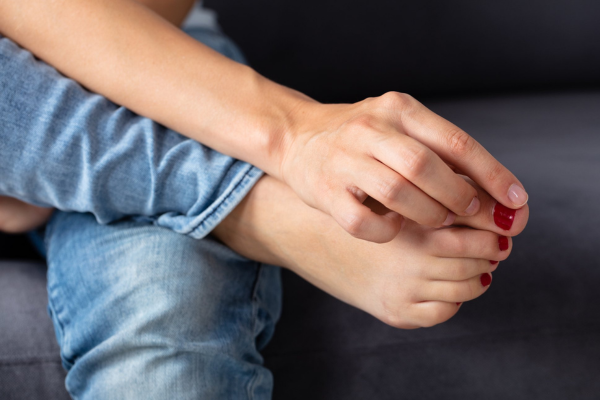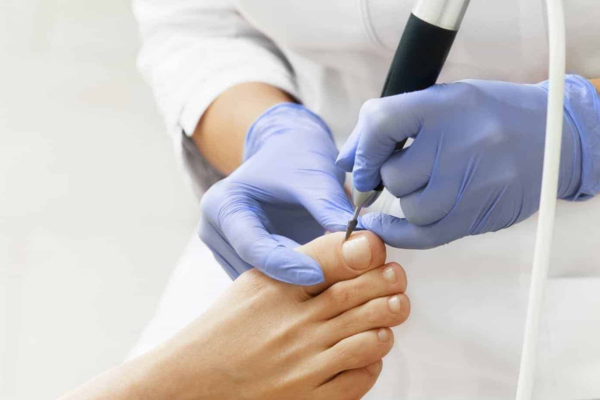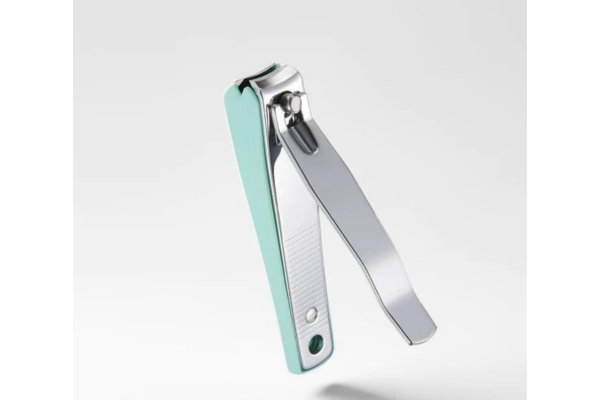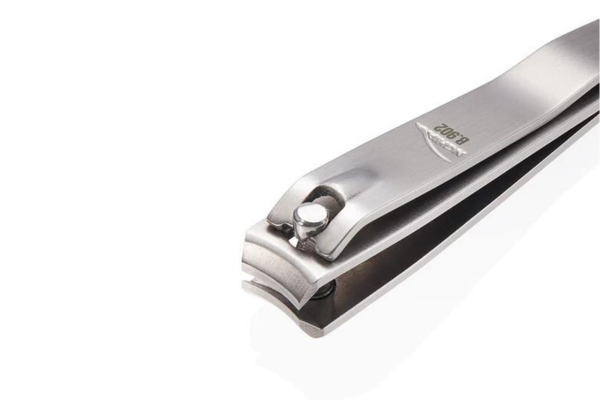Ingrown toenails can be a painful nuisance that affects daily activities and causes discomfort. Understanding the different types of ingrown toenails and choosing the right ingrown toenail clippers are important steps toward effective treatment and prevention. In this guide, Nghia Nippers look at the causes of ingrown toenails, explore the different types, discuss key factors to consider when choosing clippers and give practical tips for prevention.
1. Ingrown toenails and their potential causes
Nails grow as the edge grows, part of the nail grows into the surrounding skin, causing pain, inflammation and possible infection. Several factors contribute to ingrown toenails:

- Improper trimming: Cutting the nails too short or rounding the edges instead of a straight cross cut can encourage ingrown toenails.
- Shoes: Shoes that are too tight or narrow can press on the toe, forcing the nail to grow inward.
- Trauma: Injuries to the toe, such as stepping on or falling on heavy objects, can cause the nail to grow irregularly or ingrown.
- Genetic predisposition: Some individuals may inherit it. characteristics that make them more susceptible to ingrown toenails, such as unusually curved nails or excessive nail thickness.
- Poor foot hygiene: If the feet are not kept clean and dry, this can create a moist environment that encourages fungal infections and softens the skin, making them . it's easier. to allow the nail to penetrate the skin.
- Improper nail cutting technique: Cutting nails diagonally or using improperly sanitized tools can damage the surrounding skin and increase the risk of ingrown toenails.
Understanding these potential causes can help people take preventative steps to prevent ingrown toenails. toenails and maintain general foot health.

2. Different types of ingrown toenails
Understanding the various nuances of ingrown toenails is paramount for effective diagnosis and treatment. Here is a detailed breakdown of the three most common types:
2.1 Mild
Mild ingrown toenails usually present as mild discomfort and localized redness in the affected area. Although the nail may begin to grow into the surrounding skin, the pain is usually bearable and not debilitating.
In these early stages, home remedies such as warm soaks, gentle massage and proper nail care techniques can often relieve symptoms and prevent them from getting worse. Mild ingrown toenails require careful monitoring and prompt intervention to prevent progression to more severe stages.
2.2 Severe
At the other extreme, severe ingrown toenails cause severe pain, significant swelling, and severe inflammation. An infection can develop, causing discharge of pus and discomfort.
These severe cases often require professional medical attention, including procedures such as partial removal of the nail or the administration of antibiotics to fight the infection. Prompt intervention is essential to relieve pain, prevent complications, and promote healing.
2.3 Curved
Curved ingrown toenails occur when the nail has a natural or acquired curvature that promotes penetration into the surrounding skin. Curved ingrown toenails can be especially difficult to treat because of the shape of the nail, which increases the likelihood of skin penetration and damage.
Regular surgery with appropriate techniques and the use of appropriate shoes are necessary preventive measures to minimize the risk of further complications. However, people with curved ingrown toenails should be vigilant and consult a specialist if symptoms persist or worsen.
Of course, identifying the type of ingrown toenail is key to determining the most appropriate course of action. While mild cases may respond well to conservative home care measures, severe or crooked ingrown toenails often require specialist intervention to relieve pain, treat infections and prevent long-term complications. Early recognition and proactive management are key to optimal results and maintaining foot health.
3. Choosing the right ingrown toenail clippers
There are several important factors to consider when choosing the right ingrown toenail clipper for efficiency and comfort.
3.1 Nail thickness
Choose ingrown toenail clippers with strong blades that are designed for different nail thicknesses. These durable blades should be able to cut through thick nails without bending or breaking.

Look for models with adjustable settings that allow you to customize your trimming experience based on the thickness of your nails. By prioritizing the thickness of the nail, you can ensure that your clippers get the job done regardless of your individual nail characteristics.
3.2 Blade type
Precision is key with inline ingrown toenail clippers. Look for clippers with precision blades designed specifically for the complexity of ingrown toenails. Curved or angled blades can provide better maneuverability, allowing for precise tuning of ingrown toenails without damaging the surrounding skin.
By choosing the right type of nail clippers, you can achieve a precise and controlled clipper, minimizing the risk of discomfort and complications.
>>> Related News: DISCOVER QUALITY PROFESSIONAL TOENAIL CLIPPERS
3.3 Material and quality
The quality of the materials used in the manufacture of embedded toenail clippers is most important in terms of durability and performance. Choose knives that are made of high-quality materials, such as stainless steel, which is known for its strength, durability and resistance to rust and corrosion.
Make sure the knives have smooth edges and strong construction to avoid irritation or injury during use. Investing in ingrown toenail clippers made of quality materials and construction will ensure the longevity and reliability of your nail care routine.

3.4 Ease of use
Convenience and ease of use are important when choosing ingrown toenails. Look for clippers with ergonomic handles and comfortable grips that reduce hand fatigue and provide precise control during use. Consider models with additional features, such as built-in magnifying glasses or LED lights, which can improve visibility and make trimming easier, especially for those with vision or dexterity. By prioritizing ease of use, you can ensure a more convenient and efficient nail care experience.
By carefully evaluating factors such as the thickness of the nail, the type of blade, the quality of the material and the ease of use, you can choose an ingrown toenail clipper tailored to your needs. exact needs. special needs and preferences. Investing in quality ingrown toenail clippers not only ensures effective nail care, but also boosts overall foot health and comfort, giving you confidence and peace of mind in your grooming routine.
4. How to prevent ingrown toenails
Preventing ingrown toenails requires taking proactive steps to maintain proper foot care practices. Here are some effective strategies.
4.1 Proper toenail trimming
Regularly trim your toenails straight, avoiding rounded edges. Use proper nail ingrown toenail clippers and avoid cutting them too short. Keeping nails at a moderate length reduces the chance of them growing into the surrounding skin. Also avoid tearing your nails, as this can cause irregular growth patterns and increase the risk of ingrown toenails.
4.2 Footwear
Wear shoes that fit properly and allow enough room for the toes. Tight or narrow shoes can squeeze the toes, putting more pressure on the nails and promoting ingrown toenails. Choose shoes with a wide toe that allows the toes to spread naturally. Avoid high heels or pointed shoes, as they can make toenail problems worse by forcing the toes into an awkward position.
4.3 Foot hygiene
Keep the feet clean and dry by keeping the feet well. Wash your feet daily with soap and water and be sure to dry them thoroughly afterwards, especially between the toes. A moist environment can promote fungal infections and soften the skin, making it more susceptible to ingrown toenails. Consider using foot powders or antifungal agents to keep your feet dry and infection-free.

Also, avoid walking barefoot in public places where bacteria and fungi thrive, as this increases the risk of infections that can lead to ingrown toenails. If you have diabetes or other conditions that reduce circulation or sensitivity in your feet, it's important to check your feet regularly for ingrown toenails or other foot problems and see a doctor right away if necessary.
Using proper toe trimming techniques, wearing the right footwear and good foot hygiene can greatly reduce the risk of ingrown toenails and promote overall foot health. Consistent foot care practices are key to preventing discomfort and complications from ingrown toenails, allowing you to stay active and comfortable on your feet.
5. Conclusion
Investing in ingrown toenail clippers tailored to your best needs can greatly reduce discomfort. and prevent future problems. By understanding the causes, types, and prevention strategies as Nghia Nippers guided above, you can effectively manage ingrown toenails and maintain optimal foot health. Remember that preventative care and attention to detail are key to keeping ingrown toenails under control.
.Read more: High quality nail clippers













